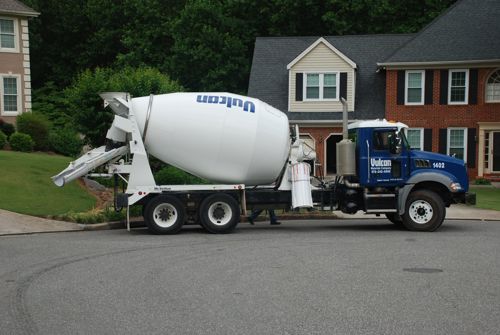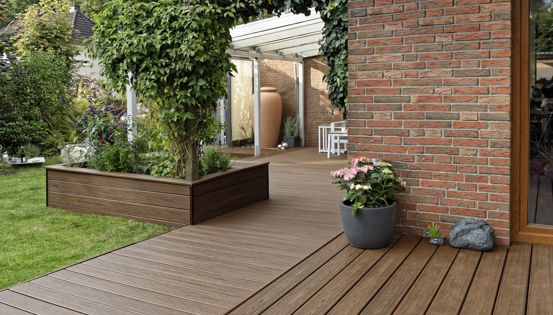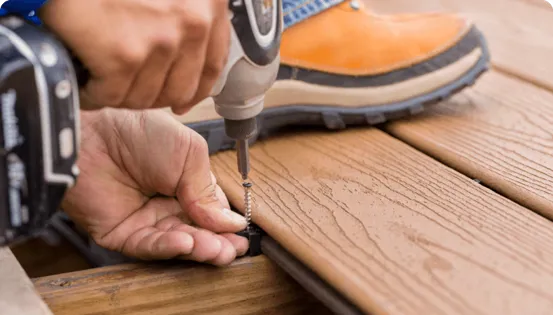If you are planning on using a large amount of concrete and don’t want to spend your time mixing hundreds of concrete bags by hand, you may want to hire a concrete truck to deliver a few yards of ready mix concrete to your site. This will be somewhat more expensive, but you can be sure that the concrete is properly mixed and it will save you the large hassle of doing it yourself.
Don’t get the wrong impression though; dealing with big machinery doesn’t necessarily add complications. Follow our step-by-step instructions below and you’ll be ready to build and enjoy your deck in no time.
How Much Concrete Do You Need?
There’s a point of diminishing returns when it comes to large deck projects – i.e., where the amount of ready-mix bags will cost more money, time and effort than hiring a truck to deliver to your site. So before you get too deep into your deck building venture, it’s important to know exactly how much concrete you’ll need based on the size of your deck and the number footings.
Once you’ve calculated the exact amount, it’s a good idea to tack on at least 10% extra to be sure you don’t run short.
What Kind Of Concrete Mix Do You Need?
There are several different mixes available. When you order, tell the contractor what you are using it for and they should be able to recommend the best mix. Make sure the concrete you buy yields a compressive strength of at least 2500 psi.
How Much Does Concrete Delivery Cost?
Concrete is sold by the cubic yard. Depending on the grade of your land and the quality or pattern of the concrete, the national average price for delivery of ready-mix concrete is about $108 per cubic yard, or between $8 - $18 per square foot.
Most companies require a minimum order of one cubic yard for delivery, plus a delivery surcharge. Be sure your site is prepared for the concrete delivery ahead of time, as some companies will charge for delays.
How To Find And Choose A Contractor For Your Concrete Delivery
When hiring a mixer, any internet search result can yield a plethora of local companies in your area. But how do you know which is the right one for your needs? Be sure to do your research beforehand.
Start by asking friends and family about any local concrete companies they’ve used. You can also contact a concrete supply company for recommendations. Having a few options to choose from will help ensure you get the right contractor with the most experience at the best price. You can then ask your short list of contractors for references.
Next, verify their insurance – there are risks associated with job sites and things can go wrong. The contractors you’re considering should carry insurance that’s adequate enough to cover your home and your decking project if an accident were to happen.
Lastly, ask questions to ensure that you’ve got an experienced contractor who’ll provide the right mix for your deck while actively sharing insights and suggestions, such as concrete stamps and other details to enhance the overall aesthetic. See the FAQ list below.
FAQs For Concrete Contractors
In addition to knowing how much you should be paying for concrete delivery, it’s equally important to know if you’re getting your money’s worth. If you have any questions or concerns about your deck project, be sure to share them prior to the concrete pour. Here are a few suggestions:
- What kind of experience do you have?
- Are you managing a team; if so, what kind of experience do they have?
- What are some of the projects you’ve completed?
- Are there pictures or a portfolio of your work I can view?
- When can you start and approximately how long will the project take?
- Are permits necessary to obtain before starting my project?
- Do you offer a written guarantee in your contract?
- What is the cost for concrete delivery, and what is your total quote for my project?
Good To Know: How Much Does A Concrete Truck Hold?
Concrete trucks weigh an average of 25,000 lbs. by themselves and up to 40,000 lbs. when carrying a full load. Their capacity is around 8 cubic yards, but can be up to 10 cubic yards if fully-loaded.








